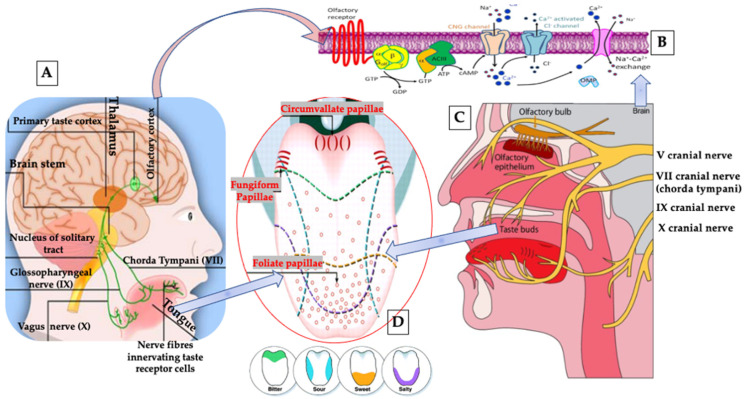Figure 9.
(A–D) Shows the correlation between taste and smell senses dysfunction in patients with burning mouth syndrome (BMS), even though taste and smell are separate senses with their own receptor organs, they are intimately entwined. Olfactory information passes to adjacent parts of the orbital cortex, where the combination of odour and taste information helps create the perception of flavour [100,102,103]. As shown in (A), taste signals go from the mouth, via cranial nerves, to the medulla oblongata in the brainstem, then up to the thalamus and on to the cortex, where the sensation becomes a perception. The distribution of trigeminal nerve (V3), glossopharyngeal nerve (IX), Vagus nerve (X) and chorda tympani (branch of the facial nerve (VII)) innervating the tongue. As shown in (B), shows the mechanism of action of smell sense where the olfactory bulb connects directly to the limbic system, the brain area that regulates emotion. As shown in (C), the distribution of the V3 nerve. As shown in (D), the distribution of the of four basic tastes (sweet, bitter, sour, salty) on the tongue according to their associated papillae (circumvallate, fungiform, foliate). Sweet, salty and bitter tastes had higher thresholds, but the sour taste had lower thresholds. Sour is the taste that involves the activity of H+ ions directly through channels in the receptor membranes, which also can activate small pain fibres. In addition to peripheral nerve degeneration, a more sensitive perception of acids (for taste and pain) could be related to the peripheral mechanism of BMS. List of the abbreviations are listed in Supplementary File S2.

